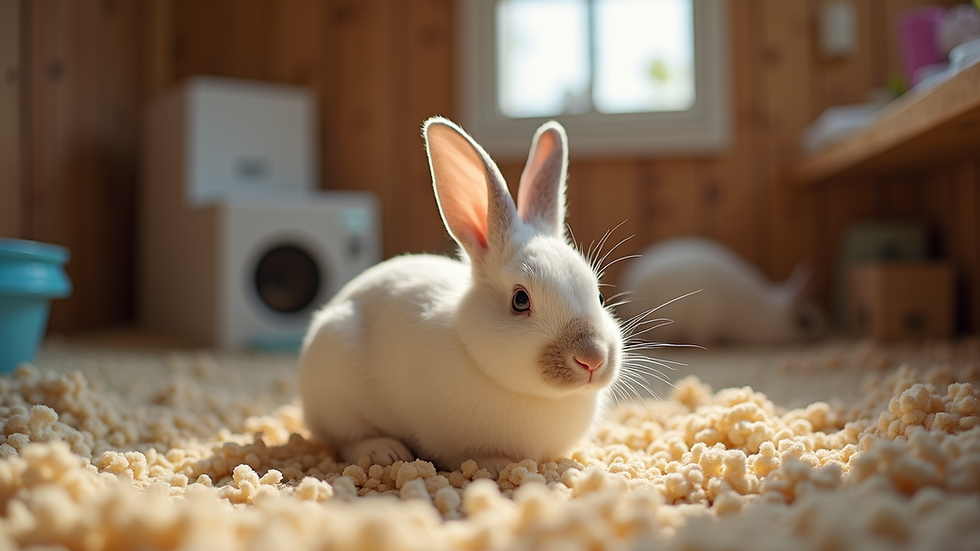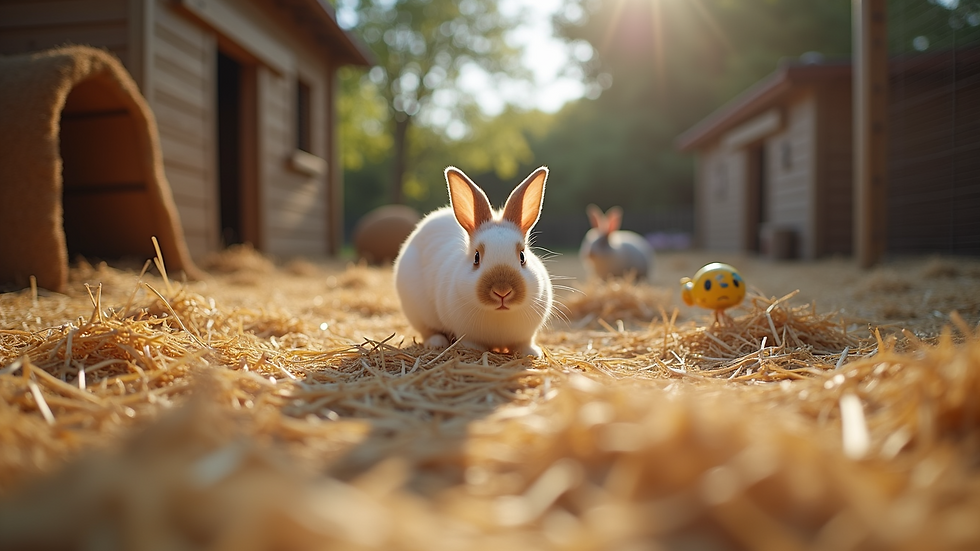Creating the Perfect Environment for a Happy Rabbit
- silviya9
- 6 hours ago
- 3 min read
Rabbits are gentle, social creatures that thrive in environments tailored to their needs. Creating the perfect space for your pet rabbit is essential to ensure it lives a healthy, joyful life. This guide will walk you through practical steps to design a comfortable and stimulating habitat that promotes well-being and happiness.
Understanding Your Rabbit's Needs - Rabbit Happiness Guide
Before setting up your rabbit’s environment, it’s important to understand what they require physically and emotionally. Rabbits need space to move freely, a safe and quiet place to rest, and opportunities for mental stimulation. Their natural behaviors include digging, chewing, and social interaction, so your setup should accommodate these instincts.
Space: Rabbits need room to hop, stretch, and explore. A cramped cage can lead to stress and health problems.
Safety: Protect your rabbit from predators, harmful objects, and extreme temperatures.
Comfort: Soft bedding and a cozy hideout help rabbits feel secure.
Social Interaction: Rabbits are social animals and benefit from companionship, either from humans or other rabbits.
By focusing on these needs, you can create an environment that supports your rabbit’s physical health and emotional well-being.

Essential Elements of a Rabbit-Friendly Habitat
Creating a rabbit-friendly habitat involves more than just a cage. Here are the key elements to include:
1. Spacious Living Area
Rabbits need a large area to move around. A minimum of 12 square feet of living space is recommended, with additional space for exercise. Consider a rabbit-proofed room or a large pen where your rabbit can roam safely.
2. Comfortable Bedding
Use soft, absorbent bedding such as hay, straw, or paper-based products. Avoid cedar or pine shavings, as they can be harmful to rabbits’ respiratory systems.
3. Hiding Spots and Shelters
Rabbits feel safe when they have places to hide. Provide tunnels, boxes, or small shelters where your rabbit can retreat when it wants privacy.
4. Toys and Enrichment
Chew toys, tunnels, and puzzle feeders keep your rabbit mentally stimulated. Rotate toys regularly to maintain interest.
5. Proper Diet and Water
Fresh hay should be available at all times, supplemented with fresh vegetables and a small amount of pellets. Clean water must be accessible at all times.
6. Litter Box Training
Rabbits can be trained to use a litter box, which helps keep their environment clean and reduces odors.

How to Maintain a Healthy and Stimulating Environment
Maintaining your rabbit’s environment is an ongoing process. Here are some tips to keep the habitat clean, safe, and engaging:
Daily Cleaning: Remove soiled bedding and uneaten food daily.
Weekly Deep Cleaning: Wash the enclosure, toys, and accessories with pet-safe cleaners.
Temperature Control: Keep the environment between 60-70°F (15-21°C) to prevent heat stress or cold discomfort.
Regular Exercise: Allow your rabbit supervised time outside the enclosure to explore and exercise.
Social Time: Spend time interacting with your rabbit daily to build trust and provide companionship.
By following these maintenance tips, you ensure your rabbit’s environment remains a place of comfort and joy.
Creating a Bond Through Environment and Care
A well-designed environment is the foundation for a strong bond between you and your rabbit. When your pet feels safe and happy, it is more likely to be affectionate and interactive. Here are ways to enhance your relationship:
Gentle Handling: Approach your rabbit calmly and handle it gently.
Positive Reinforcement: Use treats and praise to encourage good behavior.
Routine: Establish a consistent daily routine for feeding, cleaning, and playtime.
Observation: Pay attention to your rabbit’s behavior and health to catch any issues early.
A happy rabbit is one that feels secure and loved, and your care plays a crucial role in this.
Tips for Outdoor Rabbit Enclosures
If you choose to keep your rabbit outdoors, extra precautions are necessary:
Secure Fencing: Use sturdy fencing to protect from predators.
Weather Protection: Provide shelter from rain, wind, and extreme temperatures.
Shade: Ensure there is plenty of shade to prevent overheating.
Safe Flooring: Avoid wire floors that can hurt your rabbit’s feet; use solid surfaces with bedding.
Outdoor enclosures can offer fresh air and natural stimulation but require careful planning to keep your rabbit safe and comfortable.
Creating the perfect environment for your rabbit is a rewarding process that enhances both your pet’s life and your relationship. By providing space, comfort, safety, and enrichment, you help your rabbit thrive and enjoy every day. Whether indoors or outdoors, a thoughtfully designed habitat is the key to a joyful and healthy rabbit.




Comments